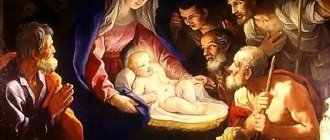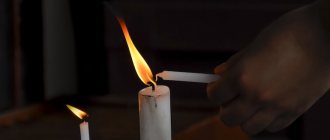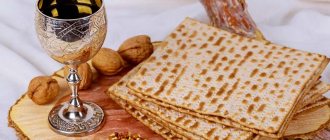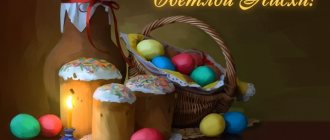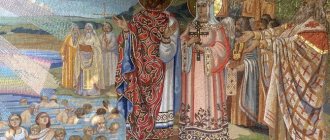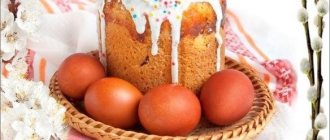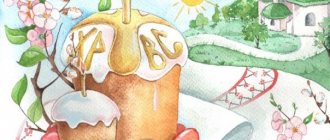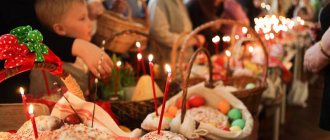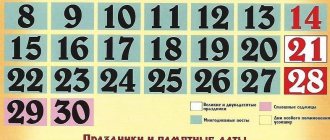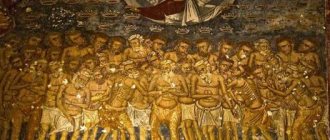Easter is the main Christian holiday and the main event that gave rise to the existence of Christianity as a world religion. The holiday is celebrated in memory of the story of the Resurrection from the dead of the son of God Jesus Christ , who voluntarily sacrificed himself, atoning for original sin and becoming the Savior of mankind.
The Christian legend of the resurrected god is not unique; it is a theme of many older religious cults of agricultural peoples associated with the seasonal cycles of nature. The Resurrection of Christ, just like more ancient cults, is a symbol and holiday of the spring rebirth of nature.
Christian Easter is event-related with the Jewish holiday of Passover , which is dedicated to the Exodus from Egypt. Gradually, Christian Easter moved far away from its Jewish roots and became a truly global holiday. Read about why different faiths celebrate Easter at different times in the FAN .
When is Easter celebrated in 2021?
Easter is one of the main Christian holidays, along with Christmas. The date of the celebration changes every year, only the day of the week remains stable - Sunday. In 2021, Easter in Russia, Ukraine and Belarus will be on May 2, which is considered an early celebration. You can find out the date of Easter Sunday from the Alexandrian Paschal, where there is a special calendar with all the Easter dates for many years to come.
By the way, Easter comes after the Spring Equinox and the Full Moon. The whole essence of the holiday is connected with the death and subsequent resurrection of Jesus Christ, but the exact dates of these events are unknown.
Holy Fire
On Holy Saturday, on the eve of Easter, the descent of the Holy Fire takes place in the Jerusalem Church of the Resurrection. The temple was built on Mount Golgotha, where Jesus was crucified, and on the site of the Holy Sepulcher - a stone cave where he was buried.
The fire is taken out during the service from the Edicule - a chapel inside the temple. The Greek Patriarch passes it on to other patriarchs, after which it is distributed throughout the temple. Every year, more than 15 thousand parishioners take part in the ceremony, holding in their hands bundles of 33 candles - a symbol of the years of Christ’s life. The service in the Church of the Resurrection is broadcast in many countries around the world.
From Jerusalem the Holy Fire is transmitted to other states. In 1992, after an 80-year break, it was delivered to Moscow. Since that time, every year the Holy Fire is transferred by plane to the capital of Russia and spreads to other cities of the country.
The history of Easter: what do we know about the date of Christ's death and his miraculous resurrection
When did Jesus Christ actually die and resurrect? According to the Gospel, Christ was crucified on the cross on Friday, the 14th of Nisan (this is the first spring month of spring among the Jews), and resurrected 2 days later, on the day of the Jewish Passover (Passover).
Church historians are inclined to believe that the date of Christ’s death falls on April 7, 30 , and the Son of God was resurrected on the morning of April 9, 30.
According to legend, the disciples of the Messiah came to his tomb on Sunday morning, Nisan 16 (April 9), but it turned out to be empty. After all the torment and terrible death, Jesus rose from the dead.
Congratulations
Easter is a great holiday for any Christian. It is customary to rejoice at the resurrection of Jesus together with loved ones. The traditional congratulation of this day is the birth of Christ, but you should not limit yourself to it. Along with this solemn greeting, relatives and friends can be pleased with beautiful poems, prose, and bright pictures, the mere sight of which lifts the spirits of the laity.
Easter is not just one holiday, it is 40 solemn days that the righteous devote to glorifying the Savior, who gave his life for human sins and resurrected after a painful death on Calvary.
Good Friday and Holy Saturday: what you can and cannot do on these days
As you know, the holiday of Bright Sunday or Easter is preceded by Lent and Holy Week. This is a period of spiritual and physical cleansing, prayer and repentance before the Lord. The strictest day of fasting is considered Good Friday, which falls on April 30 in 2021. Believers do not eat anything on this day, but drink only water. Thus, they honor the memory of Christ, who accepted a painful death in the name of the salvation of all mankind. If you do not adhere to canonical Christianity, you can eat food on Good Friday, but it is better to give up meat and alcohol.
Also on Good Friday it is strictly prohibited:
- sing and have fun;
- pick up sharp and cutting objects;
- you cannot pierce the ground with iron: work with a shovel, pitchfork, or other agricultural equipment;
- taboo on washing and cleaning the home.
On Good Friday you can bake Easter cakes and Easter bread.
Holy Saturday - on this day the final preparations for the holiday are made. Churches bless Easter baskets and hold liturgies. Throughout the day of Holy Saturday it is prohibited:
- make noise and have fun;
- guess;
- make a scandal;
- enter into intimate relationships.
The night before Easter is best spent in prayer, repenting of your sins and asking the Lord to cleanse your soul.
Is it possible to celebrate Easter if you have not fasted?
A common question: is it possible to go to Church if you have not fasted or missed the services of Holy Week? And I even forgot the last time I confessed and received communion. It is clear that we will always have good reasons why the subscriber is busy or unavailable when the Lord calls to the temple. And what, God will answer us in the same way? Separating us from the joy of the Resurrection of Christ? Oddly enough, no. Yes, when we are absent from the most important services, do not come to the Divine Liturgy, do not receive communion, that is, do not accept the Body and Blood of the Lord, we excommunicate ourselves from Christ. But, surprisingly, no matter how unfair it may seem to some devout believers, the Lord does not reject such undiligents, calling them children of the “eleventh hour.” That is, those who came to the Lord not early in the morning, but an hour before midnight, almost at the last moment. During the night Easter service in churches, the famous “Word on Easter of St. John Chrysostom” is solemnly read and this comforting message for all of us is heard: “The Lord who is is pious: he accepts the last as well as the first... Therefore, all of you, enter into the joy of your Lord... Rich and you who are wretched, rejoice one with another. Diligent and lazy, honor the day. Those who have fasted and those who have not fasted, rejoice... Let no one weep over his misery, for the common kingdom has appeared. Let no one cry over his sins, for forgiveness has shined from the grave. Let no one fear death: Spas’s death freed us...” That is, Christ’s Love - sacrificial, effective - equalizes us all! She is above earthly ideas of justice. And this is extremely important.
“Christ is Risen!”: Easter customs and traditions
At midnight on Sunday, festive services begin in churches and temples, which are accompanied by the ringing of bells. This joyful announcement of the Resurrection of Christ gathers people for the Easter service. Whole families go to church, wearing their best clothes and taking wicker baskets with Easter cakes and colored eggs.
According to tradition, believers, led by a priest, walk around the church. In honor of the joyful event, churches change the decoration of the temple Calvary (wooden crucifix) from black to white. If you are at home the night before Great Easter 2021, light the candle that you brought from church on Palm Sunday.
Services in the church will last until the morning, their culmination will be the blessing of Easter baskets with holiday cakes, colored eggs and wine. Everyone around rejoices and begins to christen themselves, greeting each other with the words “ Christ is Risen!” “In response to congratulations, you should answer: “In truth he is risen!” Also, in honor of the holiday, when people meet, they kiss three times and exchange dyed eggs (colored chicken eggs).
After the service, all family members gather at home at the festive table to break their fast. Lent is over: you can already feast on meat dishes, try Easter cakes and have an Easter egg beating. This tasty and fun game is especially loved by children who strive to break their opponent’s egg. According to the rules, the winner gets the opponent's paint and the title of champion until the next battle.
Interesting traditions of the Russian people
In Rus', the meeting of Christ's Resurrection has always been associated not only with solemn services, but also with mass merry celebrations with round dances, games, songs and dances. The bulk of song and dance “numbers” remain only in modern folklore ensembles. But the round dance (the personification of the solar life-giving circle that came from paganism) is still alive today, and is actively used during modern mass celebrations.
A favorite entertainment-competition was the now almost obsolete game with eggs:
- “rollers” - rolling colored eggs down a hill (it was important not to knock someone else’s egg and not break your own - a bad omen);
- torsion of eggs - whoever lasts longer is the winner, and he gets to take the fallen “trophy”;
- rolling paints towards each other - didn’t knock them down, rolled them - won.
Paint eggs
The festive Easter meal began with colored eggs thousands of years ago and now. Nowadays paints are rarely made by hand; they can be bought in stores, and in completely different colors and shades. But the traditional Easter color is shades of red.
This color was chosen by the ancestors of the Slavs in pre-Christian Rus', as a symbol of the Red Sun, which gives warmth, and therefore life, to all living things. And baptized Russians. The red color was identified with the martyr's blood of Christ, which he gave voluntarily for the salvation of mankind, and which was shed on the stone of the tomb in which he was later resurrected.
The blue color, introduced into the permitted coloring of eggs, symbolizes divine truth, green - fertility, yellow - faith.
Easter cake oven
Initially, a tall, tapering ritual pastry was baked by pagan ancestors for the spring equinox, dedicating it to the masculine principle that awakens life. The white fondant (icing) represented the viviparous seed. Multi-colored powder (poppy seeds, grains) – the fertility of Mother Earth. The raisins inside the Easter cake are the fruits that are born in its womb.
Christianity “purified” pagan baking by changing the tripartite symbolism to the divine essence of the Holy Trinity.
The characteristic shape of the bread, according to one version, is a stylization of the dome of a Christian temple; according to another, it is the embodiment of the outline of the stone that sealed the entrance to the tomb of Christ, through which the world was given a visible foreshadowing of the resurrection of the Son of God - the Holy Fire.
Beat eggs
Celebrations of the Lord's Resurrection meant joyful meetings. But now we can hug each other and kiss each other in public. Previously, such “frank” behavior was strongly condemned. Therefore, Christians “invented” egg “kissing” - they hit each other three times with dyed eggs, congratulating each other. This is the everyday version of the origin of the custom.
There is also a religious interpretation. It is connected with the stone of his tomb, reddened by Christ’s blood. Each blow of a believer’s egg, as it were, helps Jesus come out of the crypt and announce his resurrection to his disciples, followers - the whole world.
Great Sunday of Christ: what you can and cannot do on this day
On Bright Sunday there are no restrictions on food: the Easter menu is very rich and plentiful. These include Easter cakes, eggs, butter, cheese, meat, fish, and sausages. You can eat and drink whatever you want. But observe reasonable measures so as not to indulge in the sin of gluttony. The most delicious and satisfying dishes are placed on the table and are not removed until the evening. On Easter Day, you can invite anyone to the table and treat them. Charity is welcomed: part of the blessed food can be left in the church. After the service it will be distributed to those in need.
In addition to joyful and table traditions, there are a number of prohibitions when celebrating Great Easter.
- You can’t do household chores on Easter - you might miss out on your happiness in the hassle.
- Products blessed in the church should not be thrown away. They must be eaten or distributed to loved ones. Feed uneaten food and egg shells to birds or pets.
- Oddly enough, a married couple is not allowed to christen in public . It is believed that this is a sign of separation.
- On Easter and the entire following week, popularly called Bright, you cannot shed the blood of animals.
- It is also prohibited to throw the shells of colored eggs out the window.
There is a belief that Christ walks the earth together with the apostles, and you can accidentally hit them with husks.
What not to do on Easter Sunday
Of course, there are obvious recommendations that apply to any holiday, and especially the holy holiday of Easter:
- You shouldn’t sort things out or start important business conversations on such a day.
- It is better to refrain from unpleasant memories and everything that literally darkens the Resurrection of Christ. It is important to understand that Easter is a day of joy, not sorrow. Believers remember not the deceased, but the risen Savior.
- You should not indulge in gluttony and drink. Of course, no one denies themselves food, and a couple of glasses of nice red wine won’t hurt. We must remember what the main food is on such a day - spiritual, not earthly.
- It is not advisable to clean up, do repairs, visit beauty salons, wash windows, etc. That is, all actions that distract from a pleasant celebration are undesirable. At the same time, there are no direct prohibitions on this. Everyone can act according to their own conscience. In addition, sometimes a person may find himself at work even on Christ’s Resurrection. And of course, he must fulfill his official duty.
- You should not visit cemeteries on such a day; you should choose a different time to honor the dead. Easter is the triumph of life over death, truth over sin. It’s better not to forget about this when we celebrate Easter.
Representatives of the Orthodox Church also express a similar opinion.
On the beautiful spring day of the Holy Resurrection of Christ, everyone can feel like they are part of something wonderful and eternal. After all, celebrating Easter is a great honor. This means coming into contact with sacred history - perhaps the main event in the history of mankind.
Easter symbolism and main holiday dishes
The main symbols of Easter Sunday are painted eggs, Easter cake, and cheese Easter. These dishes must be on the Easter table, because they are fraught with sacred meaning.
The painted egg (krashenka) symbolizes reborn life and peace, stained with the blood of Christ. There is also a legend that Mary Magdalene presented Emperor Tiberius with an egg in honor of the Resurrection of Christ. The monarch did not believe her, answering that an egg cannot turn from white to red, just as a dead one cannot become alive again. The egg immediately turned red. We know that Jesus sprinkled the world with his blood for the sake of new life for all mankind.
Cheese Easter is a prototype of the Kingdom of Heaven, as well as a symbol of the Holy Sepulcher. Its shape in the form of a truncated pyramid signifies the heavenly Jerusalem. And milk and honey, which are added to the dish, symbolize the sweetness of heavenly life.
Easter cake is a symbol of the presence of God in a person’s life, his care and sacrifice. Also, the baking itself is a symbol of the body of the Lord, his mercy and sympathy for believers.
Sausage and ham are a symbol of the lamb, which, according to legend, the father ordered to be slaughtered after the return of the prodigal son.
All about the symbols of the holiday - colored eggs and Easter cake
Of course, the immutable symbols of the holiday are colored eggs and Easter cake. And it seems that everything is known about these two traditions. But this simplicity lies only on the surface, and in general we should not forget that the amazing is nearby.
Why are eggs painted for Easter?
Indeed, why will we be dyeing eggs again for Easter 2021?
The most common legend says that when Mary Magdalene learned that Christ had risen from the dead, she hastened to tell the whole area about it. And of course, she went to the Roman Emperor Tiberius, who in those years ruled the occupied territories of Israel.
Of course, her preaching about the resurrection was not taken seriously. Therefore, when Mary said to Tiberius: “Christ is risen!”, he took an ordinary chicken egg and answered: “The dead do not rise, just as eggs do not turn red.” And at the same moment, the egg in his hand turned bright red, which probably left the ruler speechless for some time. However, he did not deny the obvious and said: “Truly he is risen!”
Interestingly, this story also has its own symbolism. Essentially, it shows society's attitude towards miracles. Some are ready to wholeheartedly believe that they happen. And even without evidence. Other people, who are often called rational, pragmatic (and more recently they were more often called materialists), require an objective basis for any statement.
It is noteworthy that neither Mary Magdalene nor Tiberius enter into the discussion. And the higher power itself shows the incredulous emperor that miracles do happen.
And even if we know everything about life and a little more, this does not mean that we can do without faith. After all, it is precisely this that is a kind of prototype of a positive future, aspiration forward, a certain project of our destiny. By the way, the word project itself is translated as “forward-looking.”
NOTE
Since the egg is painted in bright red shades, it is necessary that this color be one of the predominant colors on the Easter table. Of course, the harmony of the palette and taste preferences of the owners are respected, but red eggs must certainly be present as a symbol of the holiday.
Why Easter must have colored eggs
Along with the story of Marina Magdalene and Emperor Tiberius, there are several more assumptions why colored eggs should certainly be present at Easter:
- First of all, the egg is considered a symbol of the Universe, a symbol of life itself. This is one of the cultural archetypes along with the image of water, fire and other iconic symbols. The egg seems to stand above all religions, nationalities and cultures. And this privileged position is recognized by almost everyone. If you think about it, an egg is not what gives life. This is life itself. This small prototype of an organism contains everything necessary for the emergence of a new living being. In appearance, it is no different from a pebble or other inanimate object. But under the shell, various processes intensively occur, thanks to which procreation occurs. Using the achievements of modern science, we can see everything with our own eyes, as if the shell did not exist. But ancient people had to comprehend the world mostly through their faith. What did not stop them from living, rejoicing and loving.
- The image of an egg was considered sacred by the Egyptians, Persians and Romans. Interestingly, the Romans ate a baked egg before any festive meal. It was believed that this was a good symbol of a successful undertaking of any business. By the way, these peoples always celebrated the coming of spring. And boiled eggs were always present on the table as an image of the revival of nature and good changes.
- Interestingly, on the birthday of another Roman emperor, Marcus Aurelius, which happened 2 centuries after the resurrection of Christ, a chicken laid an egg with red specks, and this was considered a lucky sign. Since then, it was customary for the Romans to send colored eggs to each other on the occasion of any holiday.
- And another version is particularly original. It is believed that the stone that blocked the entrance to the Holy Sepulcher resembled the shape of an egg.
It can be noted that none of the versions contradicts the other. Therefore, they all equally have the right to exist. Moreover, different assumptions only complement each other.
It is natural to imagine that people of ancient times also exchanged their cultural experiences, just like modern society. And although for obvious reasons the traditions spread more slowly then, they were still preserved and even survived to this day.
Thus, the custom of dyeing eggs lives on as long as Christianity exists. Eras passed, entire states and peoples disappeared, but the memory of the bright resurrection lived and lives among a huge number of people.
It turns out that everyone who paints eggs comes into contact with ancient history, which dates back at least 20 centuries. If you think about it for just a second, you can immediately feel the atmosphere of a real holiday. And these bright thoughts will certainly put anyone who wants to get into the Easter spirit into a positive mood.
What does the Orthodox Easter cake symbolize?
When we wonder what date Easter will be in 2021, we certainly remember not only the date of the bright holiday itself, but also about Easter cake. Delicious, aromatic pastries, a symbol of the holiday, which, if the correct recipe is followed, can last in the house for at least the entire Bright Week (the week after Easter Sunday).
There are several dozen varieties of this holiday dish. Traditionally it is baked from a dough based on milk, butter and chicken eggs.
It is customary to decorate Easter cake with sprinkles, pieces of fruit or berries, glaze - in a word, in this creative matter, every cook can give complete freedom to his imagination.
Why did the tradition of baking Easter cakes begin? Unlike eggs, there is no exact answer to this question.
However, what is certain is that this tradition is ancient. She has been living since time immemorial. As you know, Christ himself broke bread and poured wine during the Last Supper exactly three days before his resurrection.
Any type of bread has sacred significance for all peoples of the earth. Even today, when hunger in many countries has been completely defeated, it is considered bad manners to play with pieces of bread, throw them away, or speak unflatteringly about this truly national product without exaggeration.
In this sense, Easter cake can be considered as a symbol of fertility, satiety, and prosperity in the home. And given the tradition of breaking bread, which was established during the Last Supper, we can say that bread is a symbol of the body of Christ.
Therefore, baking and eating Easter cake is another opportunity to get in touch with the holiday and feel the magical atmosphere that reigns annually throughout the planet for 2 thousand years.
But here is the information, as they say, first hand. Hieromonk Job Gumerov answers the question of why the tradition of preparing Easter cake appeared.
Easter signs and beliefs
It has long been believed that on Easter you can ask God for anything.
- The girls asked for a groom, the elderly - for health for themselves and for the imminent birth of grandchildren.
- On Easter Sunday, you should get up before dawn so as not to oversleep your happiness.
- Young girls washed themselves with water from a red egg to look rosy.
- The top of the blessed Easter cake was saved until the sowing season. The owner ate it after completing spring field work in order to get a good harvest.
